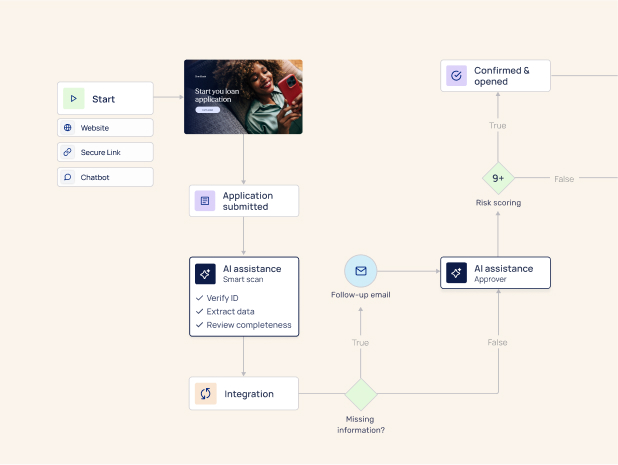The need for digital transformation is clear—most digital laggards in the insurance and banking industries realize that their current business models will soon become obsolete if they don’t digitize. Yet, although companies are happy to show off their newest apps and websites, they’re less eager to talk about the 70% of their digital transformation efforts that don’t achieve the desired results or fail entirely.
The Covid-19 pandemic has further emphasized the importance of the digital experience, yet many companies are still struggling to make it happen. In fact, despite years of work and an enormous investment of resources, many insurance and banking companies have not yet been able to achieve their primary digital transformation goals.
There is also no question of the need for a digital transformation in banking and insurance. It’s the only way banks and insurance companies can stay ahead of the competition and continue to thrive in today's rapidly changing digital landscape.
If the imperative is so clear, why do so many digital transformation projects fail, or take much longer to complete than planned? There are many factors that can impact the likelihood of success, and a better understanding of what they are is important to overcoming them. Let’s look at four key factors that are critical to digital transformation in banking and insurance.
Key digital transformation success factors in insurance and banking
So what separates the digital transformation winners from the losers? We’ve identified four factors that are critical to success:
Vision and strategy
Digital transformation in banking and insurance is not about throwing a variety of disjointed technical tools and platforms at various organizational vulnerabilities and inefficiencies. In order for a digital transformation to be successful, companies need a clear vision and strategy that looks at the organization as a whole and addresses key business goals holistically.
A successful digital transformation vision and strategy should always be focused on the digital experience and the customer journey at all touchpoints and in all interactions with the organization, across platforms and locations. Instead of siloing processes and actions by organizational processes, companies should think about them from the customer perspective and aim to create an intuitive, seamless experience for the customer. Doing so can boost conversion rates and translate into significant ROI for banking and insurance companies.
It’s important to think big—don’t limit your vision to doing the same thing that you’re doing now a bit faster or a bit better. Allow yourself to imagine what could be possible, and encourage others in the organization to take part in the process and do the same.
Once you have solidified the vision for your organization, break it down into a clear strategy that encompasses all business processes and all elements of the company. Take the time to explain it carefully, presenting it in a way that will inspire team members to invest in the transformation and play an active role—more on that below.
Team and skills
The best strategy is only as good as the capacity to implement it, and when it comes to a digital transformation in banking and insurance, that means a team with the right skills to execute the transformation. Easier said than done—there is an enormous shortage of skills in the IT world, leading to fierce competition for talent that is driving up costs across industries and domains.
No matter what the budget, in today’s cutthroat job market, many employers simply aren’t able to recruit enough employees with the skills they need to support their digital transformation. In fact, between 2015 and 2020, over half of all global organizations reported that a skills shortage was holding them back from achieving their business goals. In the banking and insurance industries, the shortage is even more acute, as tech talent often gravitates towards startups and tech companies, avoiding more traditional industries.
Recruiting employees with strong technical skills is likely to remain a challenge, at least in the near future. Yet that doesn’t mean that banks and insurance companies won’t be able to implement digital transformations. Companies can adapt to the talent shortage by minimizing their dependence on legacy systems that require highly-skilled tech talent to build and maintain. No-code and low-code platforms can help empower non-technical employees to take on roles previously limited to highly skilled workers, driving the transformation forward and allowing employees with strong technical skills to focus their time and effort on the most complex tasks.

Company culture
A digital transformation goes beyond the adoption of digital products, services, and customer interactions. It’s a fundamental, strategic paradigm shift that focuses on powering core operations and driving business value with technology in ways that are simply incompatible with traditional organizational processes and workflows.
Therefore, in order for a true digital transformation to take place, team members of all levels and in all capacities in the organization have to change their individual behaviors and work patterns as well as the ways they interact with others both inside and outside the organization. And for that to happen, the company must adopt a culture that supports the change while enabling the overarching strategy. It’s a critical task. Surprisingly, most digital transformation failures are not due to a problem with the technology, but with the people in the organization. The most prevalent reasons include lack of management support and employee resistance to change.
Embedding a digital culture in an organization is doable, but it means understanding human psychology and what makes people resistant to change. For example, are employees resistant to a digital transformation because they’re worried that it will make their role obsolete? If so, think of ways to share the overall vision with the employees and get them excited about the role they can play.
Company culture is always heavily impacted by leadership. It isn’t enough for management to issue a command and expect things to change. Instead, company leaders need to connect across boundaries, visualize new possibilities, and motivate others with an exciting vision for the future.
Technology
Last but not least, a successful digital transformation requires the right technology to support it. Identifying the right technology is about more than a checklist of features. It’s important to choose a platform that is flexible enough to support changing business needs and leverage opportunities, and accessible enough that the entire organization can utilize it.
In the large majority of cases, that means a no-code or low-code platform. No-code platforms empower team members across the organization to become “citizen developers” and play an active role in the digital transformation. In addition to reducing resistance to change, with a no-code platform citizen developers on customer-facing teams can act quickly to address needs and opportunities that they identify in their interactions with customers. It’s easier to implement changes quickly and to scale.
There are no guarantees of success when embarking on a digital transformation journey, but there is no question that certain elements are critical. By focusing on the right factors – company culture, technology, and employees – organizations in the banking and insurance industries can give themselves a much better chance to succeed.





